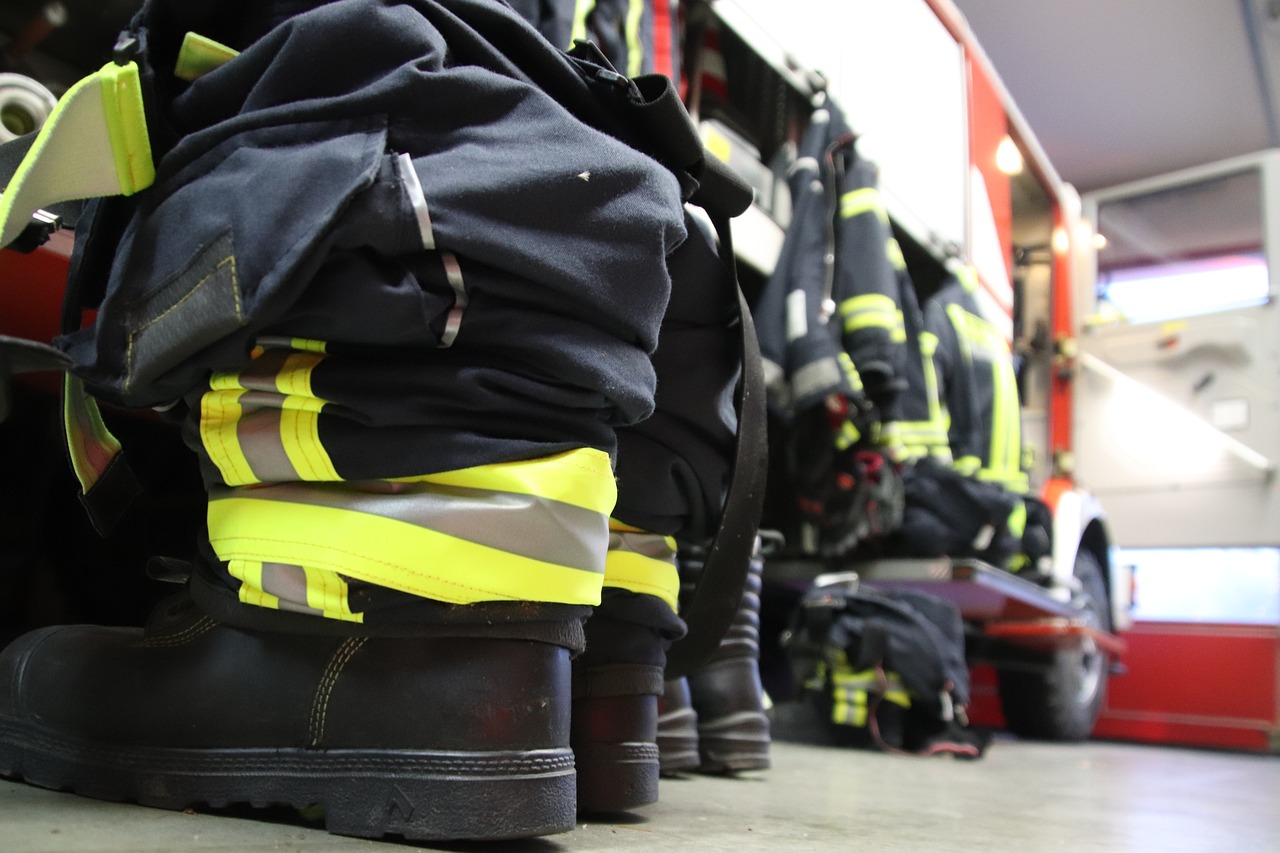Regarding the demanding and unpredictable environments that Wildland Firefighters face, having the right equipment can mean the difference between life and death. One crucial piece of gear that plays a crucial role in their safety and performance is their boots. To withstand the intense heat, rugged terrain, and long hours on the front lines, Wildland Firefighters require specialized boots that provide superior protection, support, and comfort. In this blog post, we will examine into the importance of proper footwear for Wildland Firefighters and how the right boots can ensure their safety during the most challenging firefighting situations.
Anatomy of Wildland Firefighting Boots
To ensure the safety of wildland firefighters in challenging and unpredictable environments, the design and construction of their boots play a crucial role. Understanding the different elements of wildland firefighting boots can help in making informed decisions when selecting the right pair for the job.
Materials and Construction
Boots designed for wildland firefighting are typically made of high-quality, fire-resistant materials such as leather or synthetic materials like Kevlar. These materials provide durability and protection against heat, flames, and sharp objects commonly encountered in the field. The construction of the boots often includes reinforced stitching, toe caps, and shanks for added stability and support in rugged terrain.
Key Features for Protection and Performance
- Fire-resistant materials
- Reinforced stitching for durability
- Toe caps for protection
- Shanks for support
On top of the crucial materials and construction, wildland firefighting boots come equipped with key features that enhance protection and performance in the field. Understanding these features can help firefighters make the best choice for their specific needs.
- Moisture-wicking lining to keep feet dry
- Vibram outsoles for superior traction
- Puncture-resistant midsoles for added protection
The selection of the right wildland firefighting boots is crucial in ensuring the safety and performance of firefighters in demanding conditions. By considering the materials, construction, and key features of these boots, firefighters can make informed decisions to protect themselves effectively while on the job.
Standards and Certifications for Safety Footwear
Understanding the NFPA Standards
Certifications for safety footwear are crucial when it comes to wildland firefighting. The National Fire Protection Association (NFPA) has set specific standards for boots worn by firefighters to ensure their safety in rugged terrains and extreme conditions. NFPA 1977 is the standard that specifies the minimum design, performance, testing, and certification requirements for wildland firefighting boots. It covers aspects such as durability, heat resistance, traction, and impact protection.
Additional Safety Certifications and Endorsements
On top of NFPA standards, there are additional safety certifications and endorsements that wildland firefighters should look out for when choosing their boots. Some popular certifications include ASTM International (formerly known as the American Society for Testing and Materials), OSHA approval, and EH (Electrical Hazard) ratings. These certifications ensure that the boots provide protection against specific hazards such as electrical shocks, punctures, and slips.
Understanding the importance of these additional safety certifications and endorsements can help wildland firefighters make informed decisions when selecting their safety footwear. Ensuring that all necessary certifications are met will provide the highest level of protection in demanding environments.
Selection and Maintenance of Firefighting Boots
Criteria for Selecting the Proper Footwear
The safety and performance of wildland firefighters depend significantly on the boots they wear. The appropriate footwear must provide protection against rugged terrain, intense heat, and potential hazards. Factors to consider when choosing firefighting boots include durability, heat resistance, water resistance, comfort, and support. Ensuring a proper fit is crucial to prevent blisters and foot fatigue during long and demanding shifts in the field.
Proper Maintenance for Longevity and Safety
Firefighting boots are vital gear that must be maintained properly to ensure longevity and optimal performance. Regular inspection for signs of wear, such as cracks, worn-out soles, or damaged stitching, is crucial. Cleaning off dirt, mud, and contaminants after each use will help prevent deterioration of the materials. Proper storage in a cool, dry place away from direct sunlight will also contribute to extending the lifespan of the boots.
Proper maintenance of firefighting boots is vital to prolong their lifespan and ensure they continue to provide the necessary protection in the challenging environment of wildland firefighting. Regularly cleaning, inspecting, and storing boots appropriately will help prevent accidents and injuries caused by compromised footwear.
Innovations and Future Trends in Safety Footwear
Technological Advances in Boot Design
On the frontier of safety footwear design for wildland firefighters are technological advances that are revolutionizing the way boots protect and support those on the front lines of wildland fires. These advances include lightweight yet durable materials, innovative sole designs for better traction on rugged terrain, and advanced heat-resistant components to shield against extreme temperatures. By incorporating these advancements, modern boots are not only enhancing safety but also improving comfort and overall performance in challenging environments.
Anticipating the Needs of Tomorrow’s Firefighters
An integral aspect of ensuring the safety of wildland firefighters is anticipating the evolving needs of those who put their lives on the line to combat wildfires. Recognizing the importance of agility, breathability, and protection, manufacturers are developing boots that offer enhanced flexibility, increased ventilation, and superior impact resistance. By staying ahead of emerging requirements and designing boots that address the unique challenges faced by firefighters, the industry is paving the way for safer and more effective footwear solutions.
To truly meet the needs of tomorrow’s firefighters, it is crucial to consider factors such as climate change, evolving fire behavior, and technological advancements in firefighting equipment. By engaging with firefighters to understand their experiences and challenges firsthand, manufacturers can tailor boot designs to not only meet current safety standards but also anticipate future requirements. This proactive approach ensures that firefighters are equipped with footwear that not only protects them in the present but also prepares them for the challenges that lie ahead.
Summing up
With these considerations in mind, it is clear that ensuring the safety of wildland firefighters is of utmost importance. By providing them with high-quality boots that are specifically designed to withstand the unique challenges of their environment, we can better protect these brave individuals as they work to contain wildfires. It is necessary for firefighting agencies to invest in proper footwear for their crews, as it not only enhances their performance but also reduces the risk of injury or accidents in the field. Overall, by prioritizing the safety and well-being of wildland firefighters through the use of appropriate boots, we can better support their critical role in protecting our communities and natural landscapes.



